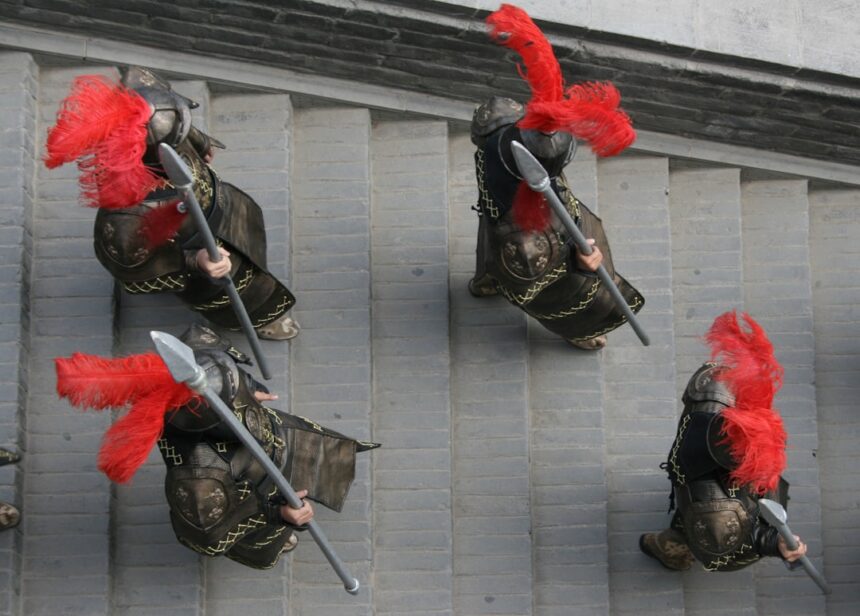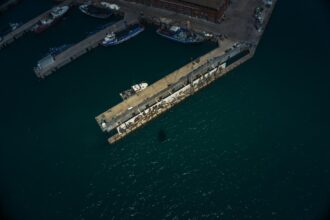The issue of gear shortages in the Russian military has emerged as a significant concern, particularly in light of recent geopolitical tensions and military engagements. As the Russian Federation continues to assert its influence on the global stage, the adequacy of its military equipment and supplies has come under scrutiny. The implications of these shortages extend beyond mere logistics; they touch upon the very fabric of national security and military effectiveness.
The challenges faced by the Russian military in maintaining an adequate supply of essential gear raise questions about its operational readiness and strategic capabilities. In an era where military preparedness is paramount, the deficiencies in gear supply can have far-reaching consequences. The Russian military, once considered a formidable force, now grapples with issues that could undermine its operational integrity.
This article aims to explore the historical context of gear shortages, their current state, and the broader implications for national security. By examining these facets, a clearer understanding of the challenges facing the Russian military can be attained.
Key Takeaways
- Gear shortages in the Russian military have a significant impact on national security and military readiness.
- Historical background reveals a long-standing issue of inadequate gear supply in the Russian military.
- Current state of basic gear shortages includes lack of uniforms, boots, and other essential equipment for soldiers.
- Factors contributing to gear shortages in the Russian military include corruption, mismanagement, and budget constraints.
- Efforts to address gear shortages in the Russian military are being made, but more comprehensive and effective measures are needed.
Historical Background of Gear Shortages in the Russian Military
Historically, the Russian military has experienced fluctuations in its supply chain and equipment availability, often influenced by political and economic factors. During the Soviet era, the military-industrial complex was robust, producing a wide array of equipment and gear that supported extensive military operations. However, the dissolution of the Soviet Union in 1991 marked a turning point, leading to a significant decline in production capabilities and maintenance of existing equipment.
The transition to a market economy resulted in budget constraints that severely impacted military funding and procurement processes. In the years following the Soviet collapse, the Russian military struggled to modernize its forces while contending with outdated equipment and insufficient supplies. The Chechen Wars in the late 1990s highlighted these deficiencies, as troops were often ill-equipped and lacked basic necessities.
Despite efforts to reform and revitalize the military in the early 2000s under President Vladimir Putin, systemic issues persisted. The reliance on outdated Soviet-era gear continued to plague the military, creating a cycle of inadequacy that would resurface in subsequent conflicts.
Current State of Basic Gear Shortages in the Russian Military

As of 2023, the Russian military faces a critical shortage of basic gear that has raised alarms among defense analysts and military experts. Reports indicate that soldiers are often deployed without essential items such as body armor, helmets, and adequate winter clothing. This lack of basic gear not only compromises individual safety but also affects unit cohesion and morale.
The ongoing conflict in Ukraine has further exacerbated these shortages, as rapid troop deployments have strained supply lines and logistics. The current state of gear shortages is not merely a logistical issue; it reflects deeper systemic problems within the Russian military’s procurement processes. The inability to provide soldiers with necessary equipment has led to public outcry and criticism from both within Russia and abroad.
Soldiers have reported receiving substandard gear or relying on personal funds to purchase essential items, highlighting a troubling trend that undermines the professionalism expected of a modern military force.
Impact of Gear Shortages on Military Readiness and Effectiveness
| Impact of Gear Shortages on Military Readiness and Effectiveness |
|---|
| Decreased operational readiness |
| Reduced combat effectiveness |
| Increased risk to personnel |
| Compromised mission success |
The impact of gear shortages on military readiness is profound and multifaceted. When soldiers lack essential equipment, their ability to perform effectively in combat situations is severely compromised. Basic gear such as protective clothing, communication devices, and weaponry are critical for operational success.
Without these essentials, troops may find themselves ill-prepared to face adversaries, leading to increased casualties and diminished effectiveness on the battlefield. Moreover, gear shortages can have a cascading effect on overall military strategy. A poorly equipped force may struggle to execute complex operations or respond swiftly to emerging threats.
This inadequacy can embolden adversaries and alter the balance of power in regional conflicts. As the Russian military seeks to project strength and assert its influence, the inability to adequately equip its forces could undermine its strategic objectives and long-term goals.
Factors Contributing to Gear Shortages in the Russian Military
Several factors contribute to the ongoing gear shortages within the Russian military. One significant issue is the inefficiency of the defense procurement system, which has been criticized for its bureaucratic hurdles and lack of transparency. The process for acquiring new equipment is often slow and cumbersome, leading to delays in production and delivery.
Additionally, corruption within defense contracts can divert resources away from essential supplies, exacerbating existing shortages. Economic constraints also play a crucial role in this dilemma. Sanctions imposed by Western nations following Russia’s actions in Ukraine have limited access to foreign technology and components necessary for modernizing military gear.
This isolation has forced Russia to rely on domestic production capabilities that may not meet contemporary standards or demands. As a result, the combination of bureaucratic inefficiencies and economic limitations creates a perfect storm for gear shortages that continue to plague the Russian military.
Efforts to Address Gear Shortages in the Russian Military

In response to these pressing challenges, the Russian government has initiated various efforts aimed at addressing gear shortages within its military ranks. One notable approach has been an increase in defense spending, with a focus on modernizing equipment and improving supply chains. The Kremlin has recognized that enhancing military readiness is essential for maintaining national security and deterring potential threats.
Additionally, there have been calls for reforming procurement processes to streamline operations and reduce bureaucratic obstacles. By fostering greater efficiency in acquiring necessary gear, the Russian military aims to ensure that soldiers receive adequate supplies in a timely manner. Furthermore, partnerships with domestic manufacturers have been encouraged to bolster production capabilities and reduce reliance on foreign imports.
Implications of Gear Shortages for National Security
The implications of gear shortages extend beyond immediate operational concerns; they pose significant risks to national security as well. A military that is inadequately equipped may struggle to respond effectively to external threats or engage in prolonged conflicts. This vulnerability can embolden adversaries who may perceive an opportunity to challenge Russia’s interests without facing significant resistance.
Moreover, persistent gear shortages can lead to a decline in public confidence in the military’s capabilities. As citizens witness reports of poorly equipped soldiers struggling on the front lines, skepticism regarding government priorities may grow. This erosion of trust can have long-term consequences for national unity and support for defense initiatives, ultimately impacting Russia’s ability to project power on the global stage.
Comparison with Other Global Military Forces
When comparing Russia’s gear shortages with those faced by other global military forces, stark contrasts emerge. Many Western militaries have invested heavily in modernizing their equipment and ensuring that soldiers are adequately supplied with advanced technology and protective gear. For instance, NATO member states prioritize defense spending and maintain robust supply chains that facilitate rapid deployment of troops with necessary equipment.
In contrast, Russia’s challenges highlight a divergence in approach to military readiness. While Western forces benefit from established procurement processes and technological advancements, Russia grapples with systemic inefficiencies that hinder its ability to keep pace with evolving threats.
Public Perception and Media Coverage of Gear Shortages
Public perception regarding gear shortages in the Russian military has been shaped by media coverage that often highlights individual stories of soldiers facing inadequate supplies. Reports detailing soldiers’ struggles with insufficient body armor or winter clothing resonate with both domestic audiences and international observers. This coverage serves to amplify concerns about military readiness and raises questions about government accountability.
Social media platforms have also played a role in disseminating information about gear shortages, allowing soldiers and their families to share their experiences directly with the public. This grassroots communication can foster solidarity among citizens while simultaneously putting pressure on government officials to address these pressing issues. As public awareness grows, so too does scrutiny regarding how effectively the government is responding to these challenges.
Potential Consequences of Ignoring Gear Shortages in the Russian Military
Ignoring gear shortages within the Russian military could yield dire consequences for both operational effectiveness and national security. A continued lack of essential supplies may lead to increased casualties among troops deployed in conflict zones, undermining morale and unit cohesion. As soldiers face heightened risks due to inadequate equipment, their ability to perform effectively diminishes, potentially resulting in strategic failures on the battlefield.
Furthermore, neglecting these issues could exacerbate public discontent regarding government priorities and resource allocation. Citizens may question why their armed forces are not adequately equipped while other sectors receive funding or attention. This discontent could manifest in protests or calls for accountability from leadership, ultimately challenging the government’s legitimacy and stability.
Recommendations for Addressing Gear Shortages in the Russian Military
To effectively address gear shortages within the Russian military, several recommendations can be proposed. First and foremost, streamlining procurement processes is essential for ensuring timely delivery of necessary supplies. By reducing bureaucratic hurdles and enhancing transparency within defense contracts, resources can be allocated more efficiently.
Additionally, increasing collaboration with domestic manufacturers can bolster production capabilities while reducing reliance on foreign imports. Investing in research and development will also be crucial for modernizing equipment and ensuring that soldiers are equipped with cutting-edge technology.
By prioritizing soldier welfare and addressing their concerns regarding gear shortages, the Russian military can enhance morale while improving overall operational readiness. In conclusion, addressing gear shortages within the Russian military is not merely a logistical challenge; it is a matter of national security that requires immediate attention and action from leadership at all levels.
In the ongoing discussions about the challenges faced by Russian soldiers, one significant issue that has come to light is their lack of basic gear. This problem is not only a logistical concern but also affects the morale and effectiveness of the troops. For a deeper understanding of the broader implications of military preparedness and the strategic decisions behind resource allocation, you might find the article on In The War Room insightful. This piece delves into the complexities of military logistics and the impact of resource shortages on operational capabilities.
WATCH NOW! 🎖️ Plot Twist: Russia’s Military Is Being Eaten Alive By Its Own Corruption
FAQs
What basic gear do Russian soldiers lack?
Russian soldiers have been reported to lack basic gear such as proper uniforms, boots, helmets, and body armor. There have also been reports of shortages in medical supplies and equipment.
Why do Russian soldiers lack basic gear?
The lack of basic gear for Russian soldiers has been attributed to various factors such as budget constraints, corruption, and inefficiencies in the procurement and supply chain processes.
How does the lack of basic gear affect Russian soldiers?
The lack of basic gear can have serious implications for the effectiveness and safety of Russian soldiers. Without proper uniforms, boots, and body armor, soldiers are at a higher risk of injury and are less equipped to carry out their duties effectively.
What is being done to address the issue of Russian soldiers lacking basic gear?
The Russian government has acknowledged the issue and has made efforts to improve the supply of basic gear to its soldiers. This includes increasing defense spending, implementing reforms in the procurement process, and cracking down on corruption within the military supply chain.




